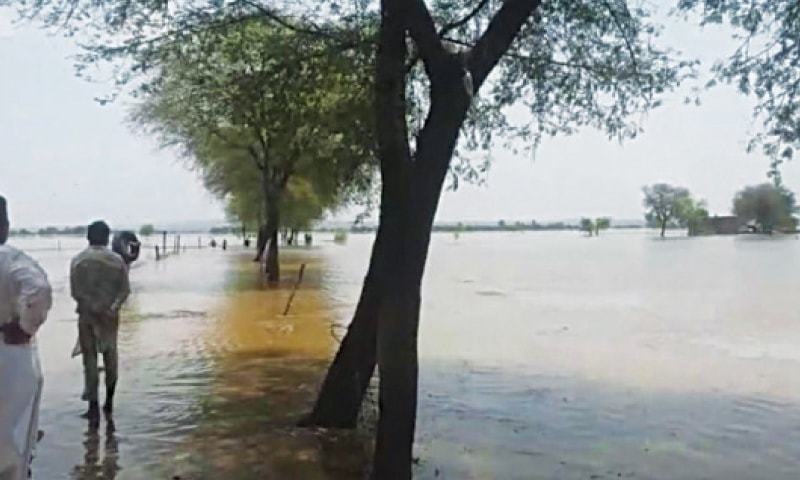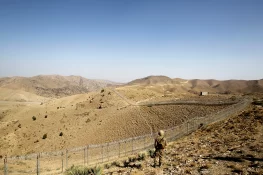Heavy Rains Trigger Flood Concerns
Continuous monsoon rains have raised the risk of flooding in Jhelum and surrounding districts, according to fresh reports from the Pakistan Meteorological Department and the National Disaster Management Authority (NDMA). Earlier, the PDMA also issued a flood alert for the Chenab and Jhelum rivers, highlighting the wider regional threat. Officials warned that rising water levels in local streams and seasonal nullahs could threaten nearby settlements if rains persist.
Two major streams, Nullah Behanan and Nullah Ghan, recorded higher-than-usual water levels on Tuesday. While no casualties or property damage were reported, authorities remain cautious as conditions can change rapidly.
Overflow in Jalalpur Sharif
The situation worsened in Jalalpur Sharif, part of Pind Dadan Khan Tehsil, where Nullah Ghundar overflowed following heavy downpours. Torrents of water cascading from the Salt Range hills flooded several villages, including Kandwal. The powerful flood currents washed away the Kandwal–Isawal road, leaving local residents cut off from surrounding areas.
For villagers, the destruction of key routes has disrupted daily life. People now struggle to access markets, schools, and health facilities, relying instead on makeshift paths and boats in some places.
Villages Submerged and Evacuation Orders Issued
Large swathes of farmland and residential areas are now submerged. District authorities have urged communities living along water channels and the banks of the River Jhelum to evacuate with their livestock to safer ground.
Officials stressed that precautionary relocation is vital to prevent loss of life. With monsoon rains likely to continue, vulnerable settlements remain at risk of flash floods and further infrastructure damage.
Authorities on High Alert
Rescue and disaster management teams have been placed on high alert. The district administration confirmed that emergency staff are monitoring riverbanks and water channels around the clock. Equipment, including rescue boats and medical kits, has been pre-positioned in case of rapid evacuations.
Officials also called on the public to cooperate fully with safety advisories, warning that ignoring evacuation instructions could prove deadly if water levels rise suddenly.
Broader Monsoon Context
Pakistan is currently in the peak of its monsoon season, which typically runs from July to September. These rains are essential for agriculture but often bring destruction, particularly in northern Punjab and Khyber Pakhtunkhwa, where rivers and seasonal streams swell quickly.
In 2022, Pakistan experienced its most catastrophic floods in decades, which killed more than 1,700 people and displaced millions. While this year’s rainfall has not reached that scale, the recurring threats highlight the country’s vulnerability to climate-related disasters.
Impact on Local Communities
For families in Jhelum district, the flooding comes at a heavy cost. Crops have been damaged, livestock lost, and homes inundated. “We fear losing everything if the rains don’t stop,” said one farmer from Kandwal, watching helplessly as fields disappeared under muddy water.
The economic consequences of such localized floods are significant. Farmers often lack insurance and struggle to recover from repeated losses, while small traders see their businesses stall due to broken supply routes.
Looking Ahead
Weather experts forecast more rainfall in Punjab over the coming days. While the NDMA is coordinating with provincial authorities, the scale of preparedness remains a concern in rural districts.
For now, residents along the banks of the Jhelum River are bracing for further challenges. With communities already displaced and vital roads swept away, the coming days will test both the resilience of locals and the capacity of emergency services.















